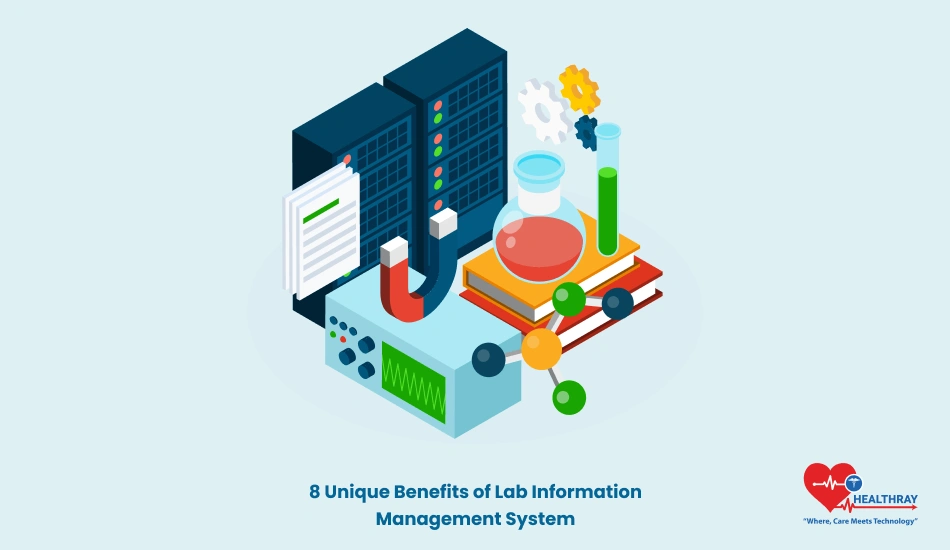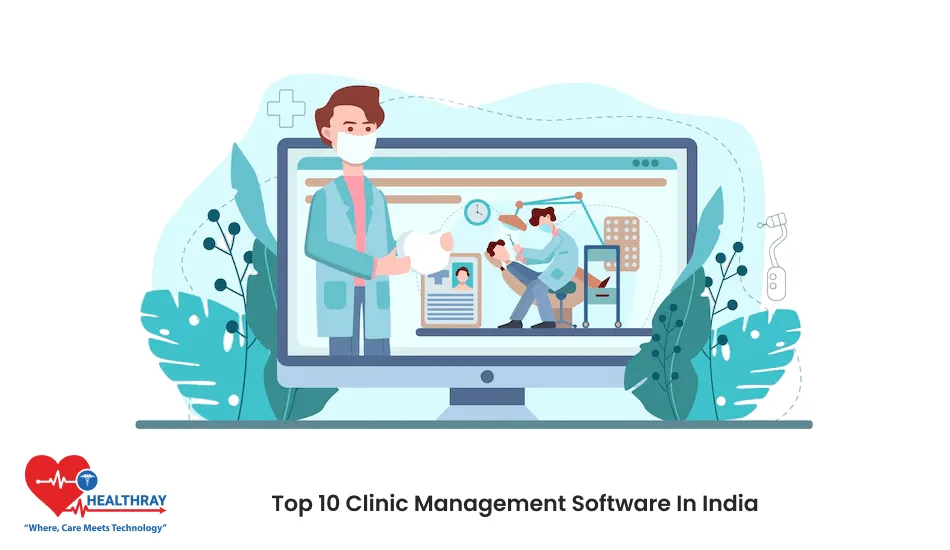Quick Summary
Whoever works in the lab needs reliable software that maintains their energy and improves their work efficiency. Moreover, the lab information management system merges each laboratory information whether it is patient test details, amount of inventory left, or workforce experience. After knowing a bit about it, you might be excited to gain more knowledge. If yes, then read this whole article.
Introduction
Not only in laboratories but in the medical sector needs an effective platform that puts all data efficiently, rapidly retrieves information, and automatically crafts the representation reports in the visual format.
Each of the laboratory workers is tired from their tasks, which leads to an effect on laboratory revenue and client care. Moreover, they have a requirement of an advanced lab information management system that brings more customization and helps to improve the management system.
Simplifying lab procedure with the affordable Healthray lab software that brings more innovation in laboratories, precise allocation of client samples, compile research information in an electronic lab document, and get accurate test reports.
Must-Have Functions of Laboratory Information Management Systems

Managing physical documents has never been easier. Therefore, it becomes crucial to replace it with advanced lab software. Furthermore, the LIMS solutions reduce long and conventional lab procedures that take more time to find one single piece of information. All lab instruments and workforce information are maintained in a single software system. Following are the must-have functions of lab information management system :
Instrument management
Once you arrange your lab inventories in a proper way and maintain instrument reading as per protocol. Moreover, it preserves more time on administering stocks, maintaining their full-fledged information, and properly monitoring each detail.
It sets the particular time and specific day for checking the instrument reading, receives prior notification of setting time, and easy to assign calibration roles to laboratory managers. Templates are editable and can be used multiple times.
Tracking samples
Monitoring has been achieved with the notable steps that cannot be possible without the efficient laboratory information management system. Furthermore, it gathers aliquot information with the sensitive details of patients.
The main components include sample ID, client name, test name, date, name of laboratory technician, and report time. After, the other assignee who examined the sample filled the information with test results. This information passed to clerical workers to create test results. Information has been accessible with a single click.
Monitor lab stock
With Healthray laboratory information management system, similar laboratory items are grouped at a single place in an unified platform. Moreover, the laboratory stocks include chemicals, day-to-day inventories, and necessary equipment for testing patients. Glance at the effects of tracking laboratory stocks :
- Saves space
- Improve client satisfaction
- Minimize expenses
- Increase productivity
- Maximize efficiency.
Regulatory compliance
In prevalent days, laboratories are not more aware of the lab protocols, they face many adverse consequences and large penalty amounts. Furthermore, the laboratory information system changes the whole scenario, it not only meets with the laboratory standard but also avoids errors.
It helps to adhere with the global laboratory standards including HIPAA, ISO 17025, and Gxp. Control lab information through the leading practice that has been automatically executed by the LIMS system.
8 Unique Advantages of LIMS Software

Lab information management systems provide astonishing solutions that eradicate the people’s bewilderment, standardize procedure, construct accurate test results, and construct reports. Advantages of laboratory management systems are more than that, have a closer look on the following details.
Produce reliable results
It creates digitized information that is locked by safety protocols, arranges error-free information, and can be edited as many times. Furthermore, it is simpler to transfer laboratory documents for re-checking or signing by powerful authorities.
Additionally, it fabricates reports with the exact medical figure and integrated components can be arranged or shifted based on the prerequisites. The test result is shared with clients instantly and receives amounts rapidly.
Curtails human errors
LIMS implementation automatically declines human mistakes and enhances efficiency because of its excellent functionalities such as digitized tools, facilitate efficient training to laboratory staff, and make it easier for supervisors to manage laboratory operations.
It includes supportive tools that effectively transfer lab documents, instantly checked by senior employees. Therefore, it reduces the error chances and minimizes redundancies.
Manage volume of information
Administer heap of laboratory information including instrument readings, stock information, sample details, and laboratory guidelines. Furthermore, it exchanges information to other systems with a single click and upgrades the quality of lab information.
With accurate management of laboratory records, it reduces the chances of being hacked and it is impossible to lose any document. It helps to drive more innovation by applying leading tactics through depiction of large data in a graphical manner.
Improve lab efficiency
Efficiency cannot be increased with a single factor, it takes more time and improvement in each step of laboratory workflow. Moreover, it is not possible without the leading lab information management system.
With each step, the aggregate expenditure and efforts are also reduced. Organized samples for speedy retrieval information. Construct analytical reports for powerful decision-making and those effective steps improve experiment quality.
Storage optimization
This is an important step of laboratory workflow because many decisions are based on efficient monitoring. Moreover, the LIMS system contributes to increasing the speed of laboratory testing and precise lab test results.
It includes electronic laboratory notebooks that keep data with the formatted structure and supports editing and transferring information to other stakeholders. Furthermore, the lab information management system preserves workforce time and reduces storage costs due to perfectly optimized space.
Improve test results
The primary motto of the lab information management system is to improve client safety and provide them full contentment. Furthermore, it facilitates digitized results that are followed with rules and create error free templates. It provides full fledged security to clients from instrument maintenance to maintaining information. Following are the effects of improving test results are :
- Enhance contentment level of clients
- Improve employee confidence
- Contributes to patient outcomes
- Reduces treatment errors
- Analysis reports promptly.
Precise data management
Laboratory data management systems play a predominant role in amassing and examining entered information. Moreover, this function makes software indispensable. It improves the whole cycle of laboratory data and uplifts their information quality.
It takes various steps to complete management of lab data such as store details, accurate processing information, and examine data after formatted structure. Therefore, it enhances data efficiency and increases the ability of making powerful decisions.
Enhance operational efficiency
It increases laboratory profits and reduces costs due to efficient management of laboratories. Moreover, the lab information management system provides exceptional laboratory service from specimen handling to compute employee increment.
All figures are accurate and eliminate any type of transcription errors. Moreover, it helps to touch the expectations of clients and provide them a sense of security. Therefore, it streamlines efficiency and enhances service quality.
Why is LIMS software the best Investment For Labs?

The laboratory information management system provides a single solution of inefficient records, inadequate stock, lower instrument quality, higher employee retrenchment rate, and difficulty to adhere with laboratory standards.
It decreases client attrition rate due to providing highest security, maintaining client records, drafted electronic test results, and instrument readings. Furthermore, it constructs error-free documentation, sharing documents to multiple departments, contributes in sample tracking, and alleviates the communication process within laboratory departments.
The laboratory management system assists in creating and managing financial documents. Therefore, it is easy to review documents, forecasting future income, and accurate financial planning.
Conclusion
The laboratory information management system assists to track reagents, uplifting the instrument quality, and enhances contentment level of clients. Furthermore, the must-have functions include instrument management, tracking samples, monitor lab stock, and regulatory compliance. The advantages of the LIMS system include producing reliable results, curtailing human errors, managing volume of information, improving lab efficiency, storage optimization, precise data management, enhancing operational efficiency, and precise data management.





